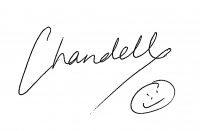#TuesdayTips
In NLP (Neuro-Linguistic Programming), the word don’t is something that we encourage our clients to change in their language. It is based on the belief that the unconscious mind does not process negative statements.
This concept was explained many times by NLP Trainers through this example: Don’t think of a blue tree. I bet you, an image of a blue tree went through your mind after reading this. Even if you didn’t think of a blue tree you needed to create a blue tree first to negate the purple or green one you did think of.
In this example, you just used words (blue, tree) that made your listener create an image in his/her mind. You made that suggestion and he/she just can’t not think of a blue tree.
This concept is so important in communication of all kinds. In parenting imagine if you told you children to stop safely at the crossing instead of telling them not to cross. In business if you told your staff to be 10mins early for the meeting instead of telling the not to be late. In a relationship telling your partner that you love their commitment instead of them not to cheat on you or break your heart.
The key is to go straight to what you want your listener to think and do in an affirmative manner, focusing on what you want them to DO.
Rephrase your statements and use a positive tone. Like for example, instead of saying, “Don’t eat too much during the holidays!” say, “Limit what you eat during the holidays.” Sounds better, right?
Observe what happens if you follow this friendly tip you might just get people congruent and happy to give you what you ask for.
Learn more concepts in NLP by registering in our next NLP Practitioner Training. Visit the Events page of this website.



